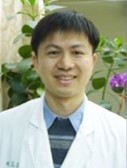- Lectures
- Institute of Biomedical Sciences
- Location
B1B Lecture Room, IBMS
- Speaker Name
Dr. Jimmy Jyh-Ming Juang (NTU Hospital)
- State
Definitive
- Url
Sudden cardiac death in young people (SCDY) always brings great grief to parents, families, school members, and caregivers, and leads to huge losses in social productivity. According to studies on Caucasians, 75% of SCDY is not caused by coronary artery disease. Most are caused by inherited sudden arrhythmic death syndromes (SADS), including Long QT syndrome, Short QT syndrome, Brugada syndrome, Arrhythmogenic right ventricular cardiomyopathy (ARVC), Catecholaminergic polymorphic ventricular tachycardia (CPVT), 1 Early repolarization syndrome (ERS), and cardiomyopathies. The incidence of these diseases ranges from 1/1000 to 1/10000. According to the 2011 US/European rhythm guidelines, genetic testing has become one of the standard treatments in clinical practice. For patients, genetic testing can help doctors diagnose, adjust medication, and predict prognosis. For family members, genetic testing can identify high-risk family members early, allowing for early treatment or avoidance of unnecessary anxiety. It is reported that in the Caucasian population, many genes can cause SCDY.
Genomics (genomic medicine) is now understood as the main root cause of complex and Mendelian diseases. Therefore, genomic sequence information may reveal other possible ways of understanding disease presentation. Until a few years ago, most mutations were identified by Sanger sequencing. However, due to its limitations and the need for rapid, accurate, and low-cost DNA sequencing, next-generation sequencing (NGS) technology was developed. Next-generation sequencing (NGS) is one of the most exciting advances in life science and biomedical research in the last decade. NGS is now considered a tool for diagnosing inherited sudden arrhythmic death syndromes by providing targeted gene sequencing. In this lecture, we will explain the application of genetic technology in inherited sudden arrhythmic death syndromes and discuss its perspectives and challenges in clinical practice.









 Home
Home

